A Quiver of Fountain Pens (Reviews)
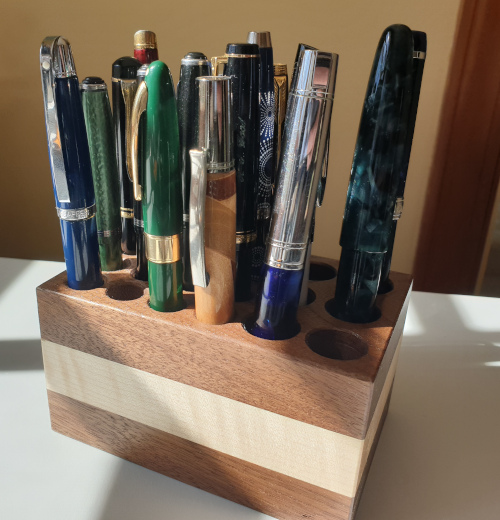
Happiness is a good pen, smooth paper, the right ink, and time to write.
In 1989 I began writing regularly in a journal. That same year, it occurred to me that the experience would be even nicer if I were to use a fountain pen. I think it's kind of like saying, "hey you know, I should try crack cocaine." First I had one pen, then I had two, then I had many. Some people collect watches, some people collect fancy cars. My collection suits my personality and is conducive to frequent relocation to exotic locales around the globe. Here are some reflections on the many, lovely writing instruments that have brought me pleasure over the years.
Cross Century

In the autumn of 1989 I went off to university, where writing in my journal was quickly becoming a habit that brought me a measure of peace and well-being. I asked my folks for a fountain pen for Christmas. They went to the one "luxury" retailer available to them, and gave me a Cross, the brand they themselves used. I used it for about a year, getting used to changing cartridges and waiting for the ink to flow, etc., before it slipped from my pocket on the snow-caked walk between classes, and was gone.
Positives: Slim, modern/classy, and unpretentious, with a metal barrel that set me on the path to experiencing pleasure from a pen that felt special.
Negatives: Somewhat unremarkable otherwise, with a nib that remains close to unmemorable despite being gold, I think.
Parker 75

Having lost the Cross, I withdrew from my hard-earned savings for a replacement, settling on a Parker, one of few in my limited price-range that nonetheless had a gold nib, which I already recognized as important to the writing experience. This one came from Fahrneys of Washington DC, who would continue selling me pens for the next few decades.
Positives: Brass barrel with lacquer coating was gorgeous and beautiful and intriguing, with a nice weight. The nib wrote beautifully, and my first converter allowed me to start experimenting with bottled ink: I started with Pelikan South Seas Blue, a bright turqouise color that bewitched on yellow legal pads.
Negatives: I experienced several feed issues, possibly the result of poor cleaning practice or possibly manufacturing trouble. I wound up sending it back for (free) service several times. I use it less these days because I've shifted from fine to medium nibs, and thicker diameter pens for my aging hands. But it's still a great pen.
Sheaffer Student

Purchased at the university bookstore on a whim, this cheapo pen came on
what they called a bubble card or blister pack, and probably only cost $6 or
so. It was a fun experiment and an introduction to Sheaffer, and it was
cool to see the level of the ink cartridge through the transparent pen body.
But when I sent the Parker off for servicing just as I flew overseas for my
first adventure, suddenly I was left only with the Sheaffer, which became my
main pen for a serious adventure. It holds a dear spot in my heart for that
reason, although it also wrote very well.
![]()
Positives: Great ink flow and writing experience despite having a steel nib. I've been a Sheaffer guy ever since.
Negatives: Cheap, lightweight plastic (obviously) and a steel nib, but worth every dollar of the six or so I paid for it.
Parker Vector
I spotted it in a book store in Jakarta and thought it was worth a try. Medium, steel nib if I recall, and a dark blue body. Simple, unassuming, a decent travel pen I made good use of through the rest of my stay in Indonesia. I really don't remember what happened to it after the trip though.
Positives: Good travel pen, lightweight, not expensive, and a decent nib. I recall the ink flow was wet and nice.
Negatives: Not many, considering the price, though the Sheaffer Student had the better feed and nib overall.
Pelikan M250

Positives: Back from Indonesia and settling into a new life as a civil engineer, getting back on my feet emotionally and financially, I decided to splurge. Did anyone really need a second fountain pen? Seemed ridiculous, absurd, a superfluous and scandalous bit of excess. But the Pelikans looked so nice and the 14K gold nib seemed smooth and amazing. Bought this – the lowest cost model they sell, an entry level pen – but made sure to choose a medium nib to differentiate it from the Parker fine point - a fine attempt at justification that would set me on a pathway to repeat for the ensuing decades: if the pens are different, you can buy them both, yes?
Positives: Spectacular nib, and my first piston-filler was fun and interesting. This pen has served me well over nearly thirty years and I reach for it when I want a smooth nib and a thick body while not drawing too much attention. I signed my wedding vows (and license) with this pen. I still use it on a regular basis, and happily.
Negatives: For its size, it's somewhat light, and over the years the gold plating has begun to erode from the clip and the decorative bands. But that's about it - the nib remains spectacular.
Waterman Hemisphere
 A lovely and thoughtful Christmas gift as I entered the Peace Corps and began a new adventure. It
was unexpected and unresearched but a hell of a good gift. Gold nib, brass
body with a nice heft. I used it intensely for many years and the nib was
pure pleasure, 14 caret gold. In hindsight, I recall it came with a bold
nib that didn't work for me at all; changing it to a medium suited me better
and gave many years of pleasure.
A lovely and thoughtful Christmas gift as I entered the Peace Corps and began a new adventure. It
was unexpected and unresearched but a hell of a good gift. Gold nib, brass
body with a nice heft. I used it intensely for many years and the nib was
pure pleasure, 14 caret gold. In hindsight, I recall it came with a bold
nib that didn't work for me at all; changing it to a medium suited me better
and gave many years of pleasure.
Positives: The nib is excellent, and the pen has a nice weight.
Negatives: A bit narrow diameter now that as I age I seem to prefer bigger writing instruments. But twenty years ago it was perfect.
Retro 51
No pictures seem to exist of this bad boy. It was an experiment, a cheap pen I thought might be good for traveling and of no great consequence if I were to lose it. Its defining feature was a little roller on the end of the clip that helped ease it into your shirt pocket I suppose, and a long, slightly showy nib.
Positives: I honestly can't think of any. It was a fun experiment from a company whose "Torpedo"mechanical pens and rollerballs are now a huge phenomon, and rightly so.
Negatives: Possibly the worst writer I ever owned. I gave it away when I had a chance, and never used it before then.
Parker Vector Calligraphy Set

Prepping for a two-year stay in Nicaragua where I planned to do a lot of
writing but couldn't bring anything too showy, yet needed a pen I'd be happy
to write with, I thought back to the Vector I'd used in Indonesia and it
seemed perfect.

Astonishingly, in addition to the regular one there was a
model for calligraphy that came with three, varying-width italic nibs. The
middle one was just perfect for journal writing. These two pens were
officially "travel pens" but they were far more than that, and the
italic one in particular was a good friend for years. Somewhere, I found converters that allowed me to use bottle ink in addition to cartridges.

Positives: Not expensive, not too showy, italic nib in three widths. A decent writer, and the simple piston adaptor allowed me to use bottled ink the whole time I traveled rather than worry about cartridges.
Negatives: Thin, by the standards I use today. Light. Neither of these things bothered me twenty-five years ago, but I'd struggle to use them today.
Aurora Ipsilon
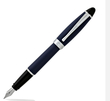
I was living in Italy, where the shop windows were filled with things I loved, and there was no dearth of clever writing instruments. I chose this as a birthday present.
Positives: A good size, and the click from putting the cap back on was so satisfying I remember it to this moment. Its weight was pleasant – not too heavy or ostentatious, but solid enough to feel like a high class experience.
Negatives: Steel nib, that took more pressure than I'd have liked and ultimately made it uncomfortable to write with for too long. I eventually gave this pen away when it seemed time to pare down the collection. I'd be tempted to try it with a gold nib though, because the rest of this pen was pretty nice.
Jean-Pierre Lepine

We were passing through Paris on the way to a long stay in West Africa that would eventually become ten full years. Browsing the shops in the lovely Saint Germain neighborhood, a pen shop drew me in, where I was transfixed by a tray of these beautiful pens in gorgeous colors. This one, some kind of color like a mango, drew me to it. The pen had a stiff, steel nib, and so wasn't the best writer I've ever owned. But the cap screwed on when posting, which was interesting, and the clip was tight as a drum in a shirt pocket. Lastly, the pen was only full length with the cap posted; otherwise it was a shorter travel size, which made it interesting for trips. I lost it in a fancy hotel in Budapest some years later.
Just thought to look it up again and to my surprise, found a shop in Louisiana that sells it. Testament to the comfort of that nib though, I'm probably going to pass.
Positives: Beautiful colors, and a nice weight in the hand. Screw-on cap when posted was interesting.
Negatives: Travel size made it short; nib was a bit stiff.
Pelikan M150 Italic

Bought this after a lovely trip to Morocco, where Arabic calligraphy had
seduced me and I was eager to write in italic. As I went through the
Fahrney's Catalog, this Pelikan stood out. It's one of my best writers to
this day. (Interestingly, Fahrneys clearly noted in my customer profile that I like italic nibs, because I received specialized catalogs showcasing them for many years afterwards. Hey, they weren't wrong about me!)

Positives: 14K gold nib, flawless, smooth, lovely to write with. Piston filler.
Negatives: Seems a little light to me these days, and of course not as luxurious as higher end models in the Pelikan series. That's about it.
Retro Desk Set
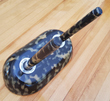
I was signing a lot of bureaucratic paperwork and thought a desk set
would be fun. Retro51 made a single deskpen set that was selling well, but
a little research turned up an older model that had both rollerball and
fountain pen. Turned out to be a good purchase and a fun pen. The bold nib
was "Iridium" and really, really soft and comfortable. I've
searched for iridium nibs since then since they are absolutely a step up
from steel. I moved it on when I changed jobs and did too little
paper-signing to make a desk pen worth the space it occupied in my little
work area.

Positives: Great nib, fun, useful
Negatives: Not surprisingly, it would dry out if you didn't use it frequently enough.
Chilton Golden Quill
Fahrneys was promoting this interesting pen at a discount, so I went for it. It remains to this day one of the pens I keep most in rotation.
Positives: Iridium nib, pretty darned smooth. A smooth writer, and really comfortable for long term writing. The wider barrel is a good weight - not too heavy, but substantial in the hand. I'd still be tempted to pick up a second one of these. The silver, iridium nib really catches the sun and I'm tempted to say it's my best non-gold nib.
Negatives: Dries out if it remains uncapped for too long - probably consequence of the thinner section in the feed. The engraved logo is a negative, in my opinion: at a minimum the letters ought to have been oriented in the other direction. The biggest design flaw is that you've got to use this pen unposted, no question about it: with the cap posted, the pen is a little top-heavy and slightly awkward.
Namiki Falcon

I'd been reading a lot about the flexible nib. I'd once learned copperplate, using dip pens, and the idea of being able to write similarly with a fountain pen was appealing. The Namiki, Pilot, and Sailor pens are all Japanese in origin and share similar features of fabrication. The Namiki as almost the perfect shape and weight, and a screw-on cap that makes it a good choice for travel. The nib I chose – soft fine (SF) – was a bit too springy for me. Several times I considered selling it, but turns out it's perfect for my Leuchtturm daily journal, where fine nibs and close, careful writing matters. Now I love it again.
Positives: Good weight and balance, possibly the perfect size. Gold nib. Good for small letters and short entries, like in a calendar.
Negatives: The SF nib is springy and annoys me for longer sessions.
Sheaffer 100
A splurge, but a low-cost impulse buy that worked out great. I was in the mood to try out
Sheaffer again. I bought it and the Preira (below) together, thinking the more expensive
Preira would be the better pen. Instead, the Sheaffer 100 was a surprise win
and a great writer.

For not much money you get a brass barrel that's heavier than you'd think and once you've used it a while, plastic pens start to feel cheap in comparison. A good travel pen because of cost, but it writes well too despite the nib being steel.
Positives: Inexpensive but well made; good nib; a nice weight.
Negatives: Narrower in diameter than the pens I seem to prefer these days. Not the best pen for really long writing sessions, but I used it frequently at work with great success and pleasure.
Sheaffer Taranis

What a cool-looking pen. Metal body, sleek, with an interesting taper that makes the whole thing look like a rocket. It wasn't expensive and it was unlike any other fountain pen I'd ever considered, so I went for it. ... and was disappointed. Great to look at, but not great to write with, so I moved it on.
Positives: Sleek, modern styling, and an interesting, hooded nib. A nice weight, and not expensive.
Negatives: The cap doesn't post properly because the tail of the pen's taper doesn't give it anything to grip properly to (did no one test this?). So the cap wobbles. Secondly, the cool flat section where you put your fingers makes it a little awkward to hold. But the wobbly cap when posted was a deal-killer for me, and I moved this pen onward.
Pilot Preira

A good enough pen, but I was surprised at how cheap it felt for the money
it cost - nearly $70, if memory serves. I liked the green, top of the cap. But there wasn't much special about this pen. I finally cracked it somehow when carrying it in a pocket, and I tossed it unceremoniously. It was fun in that its transparency allowed you to see the ink flowing into and through the feed, and assuming you chose an ink that matched the cap color - I went for green obviously, so this is Iroshizuko Shin Ryoku, it looked pretty cool.

Positives: Good enough nib, I suppose. Don't really remember it.
Negatives: I'm not sure it wrote any better than the $10 Shaeffer Student pens I bought before and after.
Sheaffer Heritage

The single most expensive pen I ever bought: I recall vaguely hyperventilating at Fahrneys as I handed over my credit card, hoping I'd seal the deal before second thoughts about the price overwhelmed me. But I was celebrating a successful career move, and wanted something fancy and substantial. If memory serves, I bought a bold nib, which is important. This pen was a heavy, bold, cigar of a pen. The integrated Sheaffer nib replicates several decades of different models including a cheaper version I'd buy in 2022.
Positives: Sheaffer. The integrated nib was really eye catching. It felt important and substantial in the hand. Not sure you'd write your manuscript with something this heavy, but you would certainly seal a deal, sign a marriage license, put your name on something important and consequential.
Negatives: Oddly, I never got this pen to write the way I wanted. Maybe it was the bold nib, not sure. I tried cleaning it dozens of times, toyed with different inks. In the end I sold it, because it brought me no pleasure and I was in a Marie Kondo kind of mood. It financed my Esterbrook Estie Evergreen below, a strategic trade.
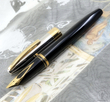
About two years after selling it, I decided to give it another try and bought a new one, this time in medium (or had the first one been medium too?). This gold nib was actually gold colored. It started giving me the same skipping issues its predecessor did before improving. Not sure if it's a design flaw, the consequence of buying "new, old stock" or what? Still love the way it feels though - the weight is really spectacular and it feels luxury.
Waterman Expert

Found myself wondering about Waterman again and decided to reward myself one month when I was given a raise at work. Good pen, with the best clicking cap in my collection. I'd bought it with a medium steel nib, and there's no question it was steel not gold, but it was still pretty comfortable for writing at work. One day strange ink leaks led me to discover I'd somehow cracked the plastic around the nib – a hairline fracture but that's all it takes – and ink was getting all over everything. I found a reseller of nib units and decided to try out the fine nib. Similar to the medium, and pretty darned good. The body is brass with a nice lacquer finish and a bright steel cap that looks classy. The Waterman ink cartridges are of a high quality with nice, bright colors too.
Positives: Great clicky cap; good writer; a good travel pen with a classy look without being ridiculously expensive. White! In a world with few white pens.
Negatives:Steel nib, not gold, so a little (but not too) stiff.
Lamy Safari AL
I'd lost my Sheaffer 100 travel pen on a trip to Africa, and it seemed like a sign from God that I should give a try one of those cool Lamys they seem to sell in the airport bookshops worldwide. So I picked up a blue Lamy Safari AL. The AL stands for aluminum. Cool, fun pen, very low key, very low stress. The nib was nothing special though, so I really don't understand the community of people endlessly collecting them and chatting about them. The nib also turned me off of the higher price Lamy Studio, an otherwise wonderful-looking pen with a really cool design aesthetic – it's the same, plain, steel nib.
Positives: German engineering. The bubble cut-out that lets you see how much ink remains is a cool innovation. Not meant to be fancy, meant to be quotidian. Nice, broad diameter means it's far more comfortable in my aging hand than other, low-cost fountain pens. A modern take on a traditional instrument, how German.
Negatives: The nib is simply nothing special to write home about. Good enough for jotting notes at work; not good enough for any writing of any length. The lightweight body really feels too light to me. The upturn in the end of the clip makes is a little strange to clip on some notebooks etc. (but is nice in shirts).
Esterbrook J series green
I wanted green pens, and this one came fully restored, which made it a good experiment. Plus, those vintage pens tended to write pretty well. No major regrets with this pen.
Positives: It's an Esterbrook J series, so there are dozens and dozens of nibs out there of all types. This one writes pretty well over all, and it's wet and lovely. The green looks beautiful in the light.
Negatives: Too small a diameter pen for my tastes these days, and really somewhat lightweight by the standards of other pens I use. This was also a reminder of why we moved away from internal ink sacks/levers to replaceable cartridges: with this pen, you're writing and suddenly you are out of ink. Cartridges were certainly an improvement.
Pelikan M205 Olivine

My inexplicable fetish for green continued raging. This low-cost Pelikan with its Olivine ink (ink of the year, 2018) was hard to get off my mind, so I bought it. The ink was an instant hit, probably my best shade. The pen however, despite being a Pelikan, was clearly made lower cost by use of a steel nib I never liked. First I tried a fine nib and then I tried a medium nib. No dice. The fine was too springy, and the medium felt like my other gold-nibbed Pelikans but harder. There's no disguising a steel nib; it's a simple as that. I finally decided to do away with it. The styling was lovely though: the modern Pelikan cap ends are gorgeous, and this green worked really well with the silver bits.
![]()
I did relent eighteen months later, and purchase the ink again. Pelikan Olivine is one of the nicest shades of dark green ink I've ever encountered (and I have several).
Positives: It's a Pelikan, and the piston fill was lovely. The new piston-fill mechanism is designed to let you see all of your ink supply, which I guess is what the new generation likes. (It's a lot of ink, actually – I tend to get bored far sooner than this thing would empty).
Negatives: Springy, steel nib.
Sailor Compass
A splurge. As I bought the Pelikan M205, I went momentarily insane and bought another green pen, just for fun. The experiment lasted about a week before I found another home for it and never looked back. Maybe it's a fun, low-cost entry pen for people trying out their first fountain pen, but it had no value to me and it was immediately clear I'd never use it.
Positives: Really not many. Somewhat inexpensive, and somewhat cool looking.
Negatives: A terrible, scratchy, steel nib and far finer than you'd expect. Apparently you have to choose one nib wider when you're purchasing these Pilots.
Sheaffer 300

It was clear Sheaffer nibs worked well for me. I was told the 300 uses the same nib as the 100, which I'd quite enjoyed, and this was a wider barreled pen. I found it on discount on Ebay, so I paid less than $50 for it. This was quite a surprise, but it's one of my top five pens. I love it. They put all the fanciness into the cap, which is heavy and provides the weight and balance. The pen, unposted, is somewhat light and plasticy. With the cap posted, it feels quite a bit heavier and fancy. The nib is great, quite possibly the only steel nib I not only tolerate but actually enjoy. If I had to choose a single pen to carry on an extended tour, this could quite possibly be the one. It's that good. Of course it takes Sheaffer cartridges too. There's a cool shininess in the body that makes it catch the sun.
Positives: Spectacular nib for steel, really enjoyable. A low stress pen that writes amazingly well at a low price. I'd be tempted to get another one of these to make sure I'm not caught without. It's a comfortable writer without inducing stress if you lose or break your fancy pen with the gold nib and high price tag, which makes it even easier to use frequently.
Negatives: You've got to post the cap or the weight is off and the lightweight body feels somewhat cheap. With the cap on, it feels fancy.
Esterbrook Estie Evergreen

Simultaneously my single most beautiful fountain pen, and perhaps my most disappointing. It was summer 2021, and I was in the mood for deep, forest green, and nothing compared/compares to this gorgeous thing, called "Evergreen". Plus, I'd been curious to see how the company that bought the Esterbrook name was doing. The pen is as gorgeous as it looks, but the nib was a steel disappointment, stiff and uninspiring. This pen bifurcated my pen acquisition into two tracks: one hand, I decided if I'm going to write with a fountain pen, it should obligatorily have a gold nib, or what's the point. On the other hand, I thought, if I'm going to buy steel nibs, then why not experiment with off-brand Chinese pens? That explains the rest of the pens in this list.
First I went back and bought two more nibs from the company: a fine nib, which was perfectly usable, and what they call a "Gena" nib but is really just a medium nib ground into a stub/italic. Both were better to write with than the bold, and the Gena in particular is quite pleasant. But make no mistake about it, behind all the slick marketing, this is a steel nib fountain pen and to be honest, I find it ridiculously overpriced into the luxury market when its materials and craftsmanship make it comparable to far cheaper offerings. To test this theory, I went out and bought the two Majohn (Chinese) pens below. That said, the plastics are beautiful and this green beauty, which is perfectly named, has no equal when it comes to evoking the deep colors of the forest.
Positives: Gorgeous to look at, and the colors really do capture the shades of a pine forest, which is exactly what I wanted. I have never seen another pen whose greens do that. The cap is unique in that there's a little spring pressure as you place it over the nib, which gives it a slightly more secure feeling. The nib is bright and shiny. The ability to switch in different nibs is excellent: I've got bold, fine, and one they call Gena, basically a medium stub.
Negatives: The nib is steel, and the bold in particular is pretty stiff. For the kind of money they're charging, I find a steel nib almost unconscionable. As mentioned, it sent me down an avenue of gold nibs, vintage and modern, which confirms their superior feel.
Sheaffer Valiant (1949)

Wasn't so sure about buying a vintage pen, but this one had been professionally restored by an artisan/craftsman, and the price was decent. The Valiant dates to about 1949 – I grow dizzy thinking about whose hands this thing passed through and what it's seen. I was interested in the gold nib, and newly convinced that I was a Sheaffer man (it's confirmed, I am). What a cool pen, what a cool nib, what a cool design.

Positives: Gold nib that stays wet, and the interesting bent-nib design is only now being copied again. It really is a pleasure to write with. A year after purchase I considered moving it on: took it out, inked it, wrote for a few days. Nope, this pen stays. Also, the cap screws on, but the thread is well thought out, and it goes from tightly capped to off in exactly a quarter of one turn.
Negatives: The modern world of transparent converters and cartridges really is superior to these opaque, complicated, vaccuum mechanisms. I've learned to cope with it, but I'm never sure if I've got enough ink, and it runs out without warning. It's also somewhat light by my current standards.
Parker Sonnet
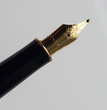
Thinking back to my old Parker, what succeeded it was a long line of Sonnets, a very successful pen that sold for over a decade. I'd never had one, and remembering the heavy, professional feel, decided to try one. I went first with a medium nib but found it somewhat thin by my standards, so purchased an additional bold nib, which writes more like others' mediums. Great pen, great nib.
Turns out, it's no longer so easy to buy a Parker Sonnet because this wildly popular pen has been a target for Chinese trademark infringers for a long time now, and there are hundreds and thousands of Parker Sonnets being sold for about $10 each. If that's a suspicious price, it should be - the real thing, with a proper, gold nib, costs far more. Thing is, the imitations are sometimes easy enough to spot but they are sometimes very, very good. Worth it to be sure, though, as this is a great pen and a great nib, and no regrets about buying it.
![]()
Positives: 14K nib. Or maybe 18K? Either way, it's soft and beautiful, and comfortable. Brass body with a nice lacquer coating - professional finish that reeks of quality.
Negatives: It's not easy to buy a Parker these days: the cheap knock-offs from China are hard to distinguish, which makes for uneasy purchasing. As noted, the nibs are a shade finer than comparable nibs from other brands, not a negative but worth noting. This Sonnet stays in rotation.
Sheaffer 330
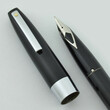
My second foray into vintage Sheaffers. This one boasts that cool, integrated nib I wanted again, but at a fraction of the cost of the original Heritage I'd done away with. Decent pen! Sheaffer used this cool, integrated nib over many models and at least a decade: you can see it in the PFM, 330, 440, Imperial, Targa, and several other variants. I bought this hoping I could get a smooth-writing integrated nib but realized the lighter weight of the pen's body made it feel noticeably less fancy. But it sure does write well.
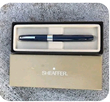
Positives: It is an excellent writer, with nice flow.
Negatives: Extremely light. Surprisingly light, as though there were a materials shortage during the war, or they were desperate to keep the market price down. It's also got that thin coat of paint that suggests it would scratch easily (hasn't scratched yet, but I'm wary). Great travel pen though, and it uses standard Sheaffer cartridges, which makes travel even easier still.
Lamy 2000 (bold and medium)

I'd gone in to discuss the Lamy Studio, whose design I really liked. But I was disappointed to learn it's basically the same steel nib as the Lamy Safari, so nothing really that special. Then I learned that Lamy's high end, gold nib fountain pen was the 2000. Reviews showed writer after writer gushing about how good it felt, and classifying it as one of their best pens. I was intrigued and came home with a bold nib, just for a change in pace. But it was so smooth and buttery to write with I went back about a year later and bought the medium nib too. Probably one of my top three pens, off hand. Truly comfortable, not flashy or ostentatious, and something really utilitarian about it - how very German! This is the first time I ever liked a pen so much I went back and bought another nib in the same model.
Positives: Great weight, balance, texture. Not too heavy, not too light. The nib is superb: silky smooth, and wet enough but not too wet.
Negatives: I really don't understand the design choice that left two little metal bits exactly where you put your fingers. I understand their purpose but somehow it seems like a design omission surprising of German engineering.
Pilot Custom 912

Had never really paid attention to Pilot before, but I was told their nibs are spectacular. Turns out, that's a fact. If I had to choose a pen that is hands-down the absolute best writer in my quiver, it's this Pilot Custom 912. The plastics remind me of the Namiki Falcon, and why not - Namiki and Pilot are the same company, essentially. But it's a classy pen, with timeless styling. More importantly, this nib is out of this world. Not too stiff, not too springy, 18k gold, and smooth as silk. If I had to choose a single pen to take me into end days, this is the one.

Positives: The best nib I've ever experienced.
Negatives: None, really, I love this pen. But what would it feel like if it were a bit heavier, like the Montblancs? (Or would that ruin the balance?)
Majohn

This pen was the direct result of that Estie. I thought, if I'm going to get a crappy, steel nib with only the quality of the plastics a redeeming factor, why not just buy a Chinese knock-off pen? So I did. And to be perfectly honest, I find the workmanship in this Chinese piston-filler more impressive than the Estie. I first ordered a medium nib, which was terrible due to use of steel that was too thick gage. I bought a second one with an extra fine nib and it was excellent. Then, it occured to me to buy a replacement nib for the medium. Turns out a bog-standard #6 nib gets its name from the diameter of the curve in the base. I confirmed this Majohn would take a #6 and bought three from Goulet. The Ahab extra flexible wasn't quite the right shape, but it took two Goulet Pen nibs with ease. The fine was responsive and wet, and the 1.1 stub was comfortable and smooth (although, still testing - it occasionally seems the feed struggles to keep up when writing fast).
![]()
Positives: For a measly $25, great pens. Can swap the nib for almost any other #6 nib on the market. Great plastics. Nice weight in the hand, and nice diameter now that I like thicker pens.
Negatives: Steel nib. Not sure how well the piston filling mechanism is made since I can't see it. The cap threading is too tight: it takes almost three full turns to put on the cap, which is a bit much (the Sheaffer 330 takes a single quarter turn, which is better).
Honorable Mentions
A couple more writing instruments that are or were a part of my life:
Parker 51
This 1940s pen's style is fashionable again, so I'm seeing a resurgence in 51 style. I inherited several Parker 51s that belonged to my grandfather, but no matter how I fiddled with them, they never wrote very well and therefore never won me over. I didn't even keep them and now they're gone. I'd owned a men's and women's set (the women's pen had a narrow diameter body, and were more delicately styled, I suppose). In hindsight, kind of wish I'd kept them, but I seriously doubt they'd have become a steady part of my quiver.
Positives: Retro.
Negatives: Did not write well.
Faber Castell e-motion pencil
OK, not a fountain pen, but a fancy writing instrument, and I use it every day. Again, saw it in shop windows in Bologna, Italy and was smitten. At 1.4mm, the lead is broad to be sure and for some tasks where small notes were required, it's just too wide (the Retro 51 mechanical pencil is a champ there, at 1.1mm lead). But for other things it's really great, and I love the way it feels in the hand and how softly the high quality lead marks. The cool wood grain slowly takes on the mark of your hand as you use it over the years.
Positives: Excellent writer and I use pencil a lot more than I used to as a result. Fits extremely comfortably in the hand. Very fun to write with, and there's something nice about holding an instrument made of wood.
Negatives: The lead is a bit broad.
Greatest Hits
Verdict: Every pen is good for a different purpose. Here is what I'd grab under different usage scenarios:
- Off to Peace Corps for long journal sessions but nothing too flashy or expensive: Sheaffer 300 or Chilton for writing
- One week work trip; pen might get lost: Majohn or Sheaffer 100
- At home, wanting the single fanciest, flashiest pen in the quiver: Sheaffer Heritage
- At home, single best writer ever: Pilot Custom 912
- Travel, nice to have ink cartridge backups: any Sheaffer, or Waterman Expert or Hemisphere
Trackbacks
The author does not allow comments to this entry

Comments
Display comments as Linear | Threaded